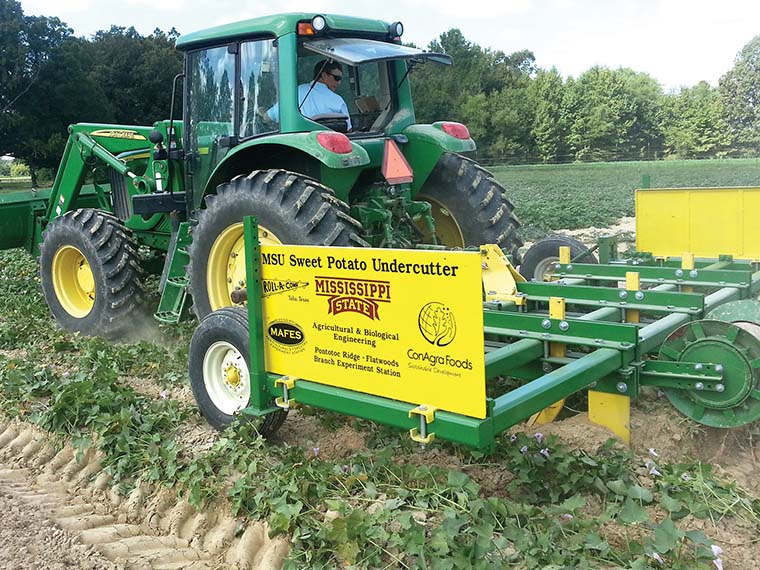The information presented on this page may be dated. It may refer to situations which have changed or people who are no longer affiliated with the university. It is archived as part of Mississippi State University's history.
Sweet potatoes are a signature, high value specialty crop in Mississippi, with 19,500 acres harvested in 2014. Sweet potato growers often experience postharvest losses due to excessive moisture loss or rots that develop in storage. These losses are directly related to damage during harvest that causes cuts and abrasions to the delicate skin of the sweet potato root, often contributing to 20-25 percent storage loss. Scientists in the Mississippi Agricultural and Forestry Experiment Station and the MSU Extension Service developed a mechanical root pruning implement and method to halt plant growth and initiate skin set prior to harvest. The undercutter digs below the surface with a V-shaped blade to cut the roots that feed the potato from the soil.
This stops the flow of nutrients and water to the potato and induces a state of shock that causes the skin to toughen. Funded through the Experiment Station's Strategic Research Initiative, the undercutter reduces damage during harvest, providing immediate benefit to sweet potato producers by increasing the quality of stored crops, thus maintaining a year-round supply of quality sweet potatoes. The undercutter has been tested in experimental plots and skin strength was directly measured. Root skin strength was measured at three days and six days after treatment. Results indicate undercutting increases skin strength the same as the current industry practice of removing vines. At six days after treatment, undercutting with the newly developed implement significantly increased skin strength by nearly 11 percent for plots in which the vine had been left intact. More experimental studies on the undercutter are expected and the patent application will be extended.
July-December 2014
- Invention Disclosures (1)
- Patent Applications (5)
- Patents Issued (5)
- Licenses/Options Executed (5)
Invention Disclosures
Process and Nickel Based Nano-structured Catalysts for Methane Dry Reforming
Patent Applications
- Specialty Crop Undercutter and Undercutting Method
- Enhancers of Paraxonase 1 (PON1) Activity and Methods of Use
- Vibrio Assay Methods and Kits
- Salmonella and Listeria Assay methods and Kits
- Fiber Separation from Grains and Grain Products Using Electrostatic Methods

